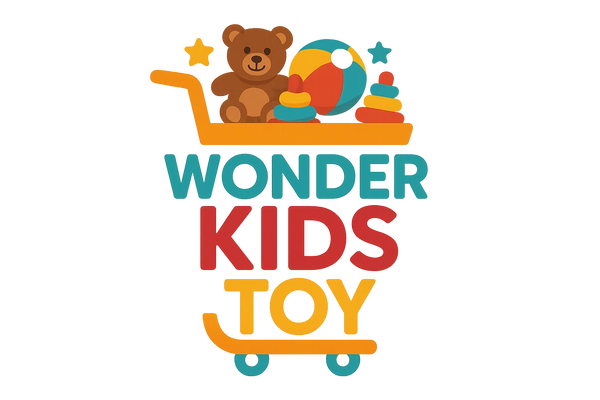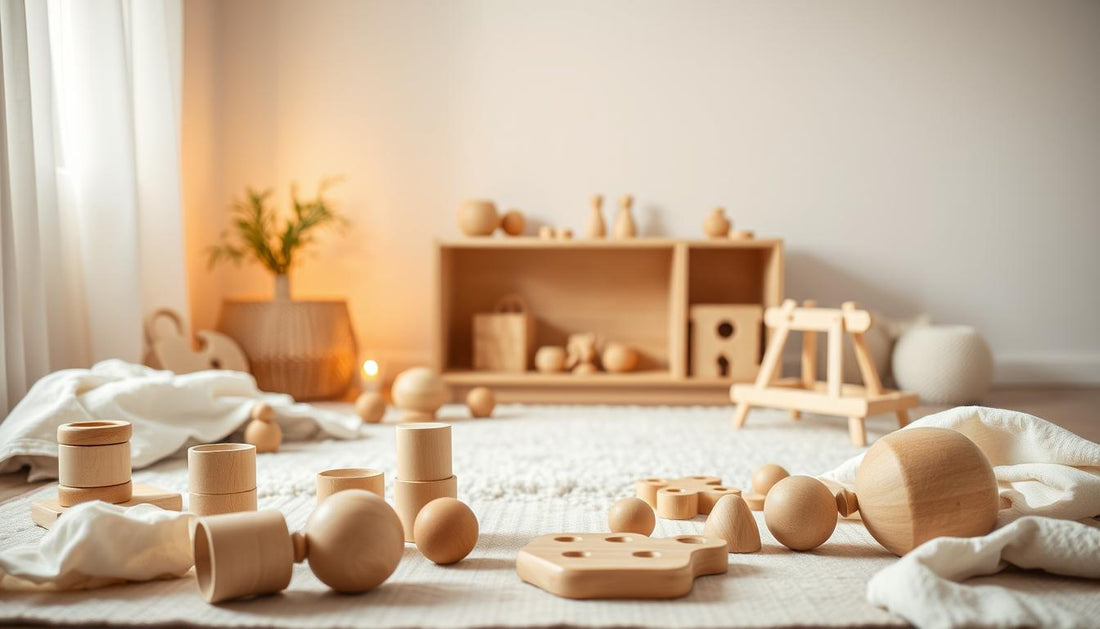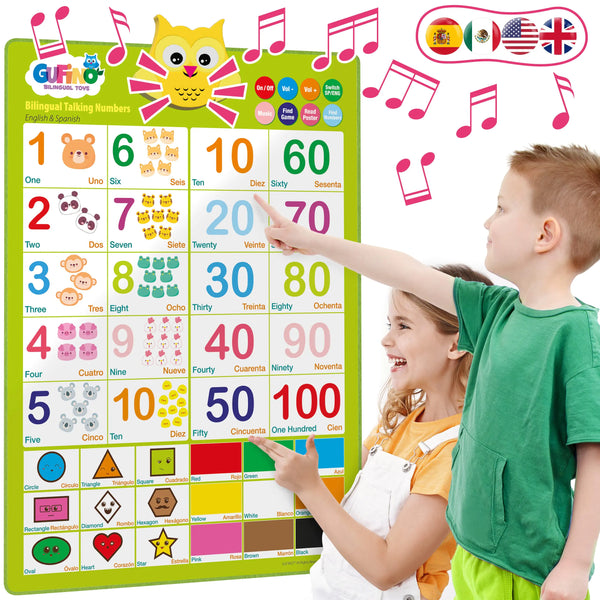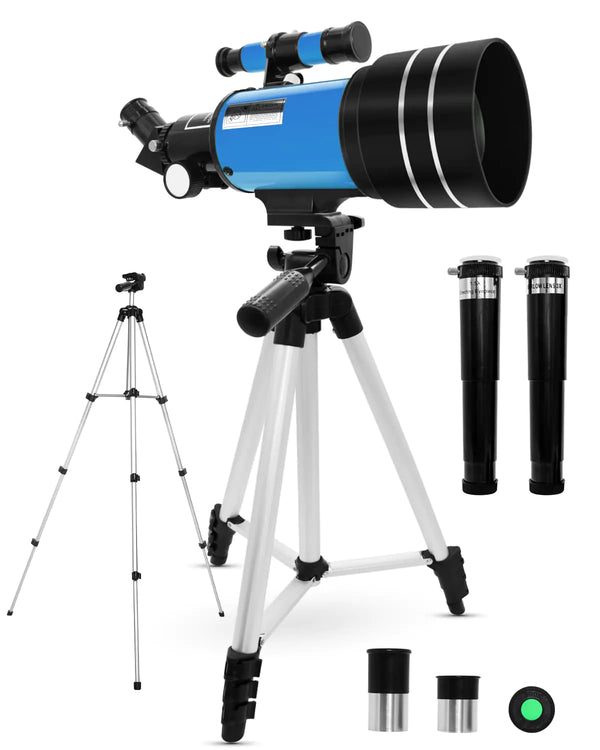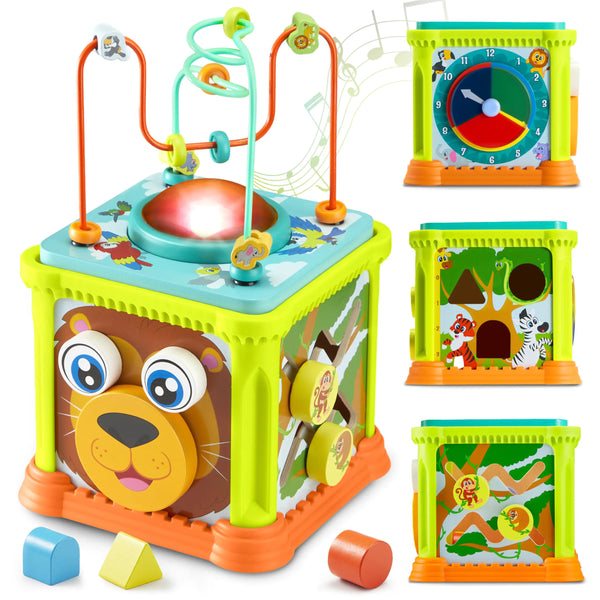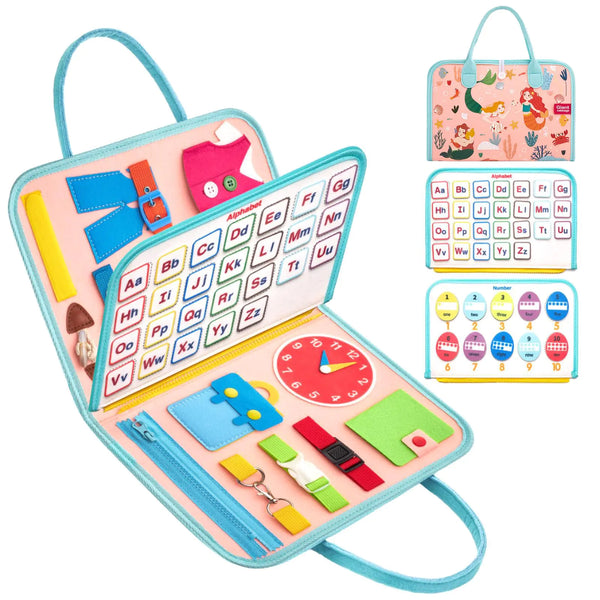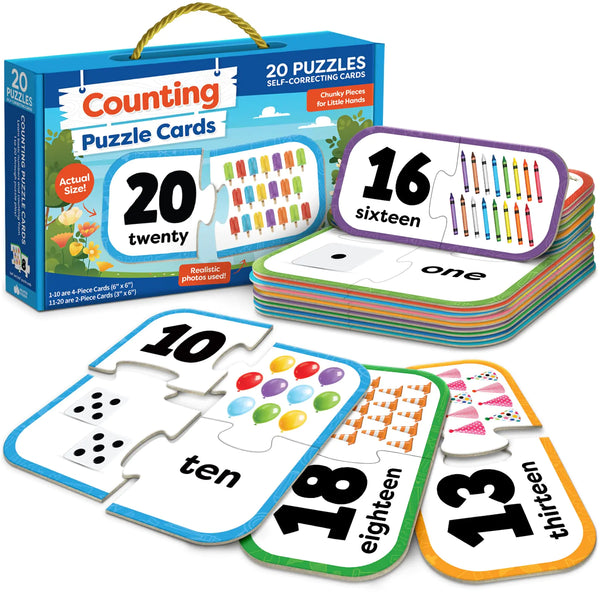Choosing the right toys for your infant can be tough. You want them to be fun and help your child grow. Montessori toys for infants are perfect for this. They help your child learn and grow, following the Montessori method.

This guide will help you find the best infant educational toys. You'll learn how to pick Montessori toys that meet your infant's needs. This makes supporting their growth easier for you.
Key Takeaways
- Understanding the principles of Montessori toys and their benefits for infants.
- Identifying the most suitable Montessori toys for different developmental stages.
- Learning how to choose toys that align with your infant's interests and needs.
- Discovering the importance of educational toys in cognitive and motor skill development.
- Navigating online stores to find the best Montessori toys for your infant.
The Montessori Approach to Infant Development
The Montessori method offers a unique view of how infants grow. It focuses on child-led learning. This approach encourages independence and self-directed growth.
Core Principles of Montessori Education
The Montessori philosophy has several key principles. These are very important for infant development.
Child-Led Learning and Independence
At the core of Montessori is child-led learning. Infants are allowed to explore and learn at their own pace. This builds self-confidence and curiosity.
Respect for Natural Development
Another important principle is respect for the child's natural development. It means supporting the infant's growth without forcing them.
How Montessori Philosophy Applies to Infants
Applying Montessori to infants means creating a supportive environment. This environment helps with their natural growth and development.
Observation and Following the Child
Observation is key. Caregivers watch the infant's interests and abilities to guide them.
Preparing the Environment
Preparing the environment means setting up a safe space for exploration. This includes choosing the right Montessori toys and materials.
By using Montessori principles, parents and caregivers can significantly impact an infant's development. This lays a strong foundation for future growth and learning.
Why Montessori Toys Matter for Your Baby's Growth
Montessori toys are key to a baby's growth. They help with learning, independence, and self-discovery. This sets the stage for a child's future success.
Developmental Benefits of Montessori-Inspired Play
Montessori play boosts babies in many ways. It helps with thinking, feeling, and social skills. Babies learn to solve problems, improve hand-eye coordination, and think critically.
Cognitive Development Advantages
Montessori toys spark cognitive growth in infants. They encourage babies to understand cause-and-effect, object permanence, and space. This is through interactive play.
Emotional and Social Growth
Montessori toys also aid in emotional and social growth. They foster self-confidence, self-regulation, and social skills. This is through independent play.
Differences Between Montessori and Conventional Toys
Montessori toys are different from regular toys. While regular toys aim to entertain, Montessori toys focus on learning and growth.
| Features | Montessori Toys | Conventional Toys |
|---|---|---|
| Purpose | Promote learning and development | Entertainment-focused |
| Design | Single-purpose, natural materials | Multi-stimulation, often plastic |
| Benefits | Cognitive, emotional, and social growth | Temporary entertainment, possible overstimulation |
Single-Purpose vs. Multi-Stimulation
Montessori toys have a single purpose. This lets babies focus on one skill or activity. Regular toys, with many stimuli, can be too much for infants.
Natural vs. Plastic Materials
Montessori toys use natural materials like wood, cotton, and wool. These offer a real touch and sensory experience. Regular toys, often made of plastic, are less engaging and can harm the environment.
Key Features of Authentic Montessori Infant Toys
Authentic Montessori infant toys are simple, made from natural materials, and designed with purpose. They help a child's natural growth, encouraging them to be independent and curious.
Natural Materials and Simple Design
These toys are made from wood, cotton, and wool. These materials give a child a real touch and are safe for their senses.
Wood, Cotton, and Other Natural Elements
Wooden toys feel warm and inviting. Cotton and wool are soft and cozy. Using natural materials is key in Montessori design.
Minimalist Aesthetics with Purpose
The design of Montessori toys is not just pretty. It's made to help children focus and learn. By being simple and functional, these toys aid in concentration and education.
Purpose-Driven and Self-Correcting Elements
Montessori toys aim to teach specific skills. They encourage learning through trial and error, allowing for mistakes.
Focus on Specific Skills
Each toy is made to improve a particular skill. This could involve hand-eye coordination or problem-solving.
Learning Through Trial and Error
By letting children make mistakes, Montessori toys build independence and strength.
| Feature | Description | Benefit |
|---|---|---|
| Natural Materials | Toys made from wood, cotton, and wool | Tactile experience, gentle on the senses |
| Simple Design | Minimalist aesthetics with purpose | Promotes concentration and learning |
| Purpose-Driven | Toys designed for specific skills | Develops particular skills, such as hand-eye coordination |
Setting Up a Montessori-Friendly Play Space
To encourage independent exploration, it's vital to create a Montessori-friendly play space. This space should be both accessible and inviting. It should foster curiosity and independence in your infant.
Creating Accessible Play Areas
Accessible play areas are key to your infant's development. You can achieve this by adding low shelves and floor spaces. This lets your baby easily access toys and materials.
Low Shelves and Floor Spaces
Low shelves help your infant pick and return toys without help. Floor spaces for play encourage your baby to explore and engage freely.
Child-Sized Furniture
Using child-sized furniture is another important aspect. It lets your infant sit, stand, and move around comfortably. This boosts their independence.
Organizing Toys for Independent Exploration
Organizing toys to promote independent exploration is vital. This means using a minimalist approach and categorizing toys by skill and purpose.
Minimalist Presentation
A minimalist toy presentation reduces distractions. It keeps your infant focused on their tasks. It involves showing only a few toys at a time.
Categorizing by Skill and Purpose
Categorizing toys by skill and purpose helps your infant understand each toy's function. This encourages purposeful play and boosts learning.
By following these strategies, you can create a Montessori-friendly play space. This space supports your infant's natural curiosity and promotes independent exploration.
Montessori Toys for Newborns (0-3 Months)
Newborns are naturally curious, and Montessori toys can help nurture this curiosity from birth. During the first three months, babies start to discover the world around them through their senses.
Visual Mobiles and Contrast Cards
Visual stimulation is key for newborns. Montessori visual mobiles and contrast cards grab their attention and boost visual development.
Munari Mobile and DIY Alternatives
The Munari mobile, with its geometric shapes and contrasting colors, is a classic Montessori visual tool. For those interested in DIY alternatives, creating a mobile using black and white cardstock or simple geometric shapes can be a cost-effective and engaging option.
High-Contrast Black and White Cards
High-contrast black and white cards are another effective way to stimulate a newborn's vision. These cards can be easily made at home or purchased. They help in developing the baby's ability to distinguish between different contrasts.
Tactile Exploration Tools
Tactile exploration is vital for newborns as they begin to understand their environment through touch.
Organic Rattles and Grasping Toys
Organic rattles made from natural materials like wood or bamboo provide a safe and engaging way for newborns to explore sound and texture. Grasping toys, designed to be easily held by small hands, encourages motor skill development.
Sensory Balls and Texture Mats
Sensory balls with different textures and texture mats offer a variety of sensations for newborns to explore. These tools are essential for developing their sense of touch and understanding of other materials.
By introducing these Montessori toys, parents can create a rich and stimulating environment that supports their newborn's early development.
Building Blocks of Genius: Top Montessori Toys for Your Infant's First Year
The first year of your infant's life is full of growth and learning. Montessori toys are key in sparking their curiosity. These toys help with their thinking, moving, and social skills.
Essential Toy Categories for Each Developmental Stage
Knowing the different stages of development is essential. It helps pick the right Montessori toys. Infants go through many phases, from exploring to solving problems.
Progression of Skills Through the First Year
Infants grow at their own pace. From 0 to 3 months, they start to see and hear. Then, from 4-6 months, they learn to grab and reach.
Must-Have Toys for Every Age
Some must-have toys include visual mobiles and tools for touching. Simple toys that show cause and effect are also great. These toys meet different needs and spark curiosity.
| Age Range | Developmental Focus | Recommended Montessori Toys |
|---|---|---|
| 0-3 Months | Visual and Auditory Development | Visual Mobiles, Contrast Cards |
| 4-6 Months | Grasping and Reaching | Tactile Balls, Simple Rattles |
| 7-9 Months | Object Permanence and Problem-Solving | Object Permanence Boxes, Simple Puzzles |
Creating a Well-Rounded Montessori Toy Collection
A good Montessori toy collection covers many areas. It should help with thinking, moving, and social skills. Parents can find toys that meet these needs.
Balancing Different Developmental Areas
It's crucial to balance toys for different skills. For example, puzzles for thinking should be paired with toys for moving, such as stacking.
Investment Pieces vs. Affordable Options
Some Montessori toys are a significant investment, but there are also cheaper options. Parents can choose based on what they want and can afford.
Best Montessori Toys for 4-6 Month Olds
At 4-6 months, babies start to explore the world. They learn through touch and movement. It's a key time to introduce toys that spark their curiosity and growth.
Grasping and Reaching Toys
Grasping and reaching toys are key to motor skill development. They help babies stretch and understand cause and effect.
Wooden Rattles and Teethers
Wooden rattles and teethers are great picks. They're safe for chewing and help with hearing skills.
Montessori Balls and Bell Cylinders
Montessori balls and bell cylinders are eye-catching. They encourage reaching and grasping. The sound from bell cylinders adds to the fun.
Simple Cause and Effect Toys
Cause-and-effect toys are essential for learning. They show babies that their actions can change things.
Rolling Toys and Bells
Rolling toys and bells are simple yet powerful. They teach babies about cause and effect.
Soft Fabric Toys with Different Textures
Soft fabric toys with different textures offer a tactile experience. They're gentle and encourage sensory exploration.
Top Montessori Toys for 6-9 Month Olds
Babies from 6 to 9 months grow fast, becoming more curious. They start to explore their world more. Choosing the right toys is key to helping them learn and grow.
Object Permanence Boxes and Balls
At this age, babies learn that things exist even when they can't see them. Object permanence boxes and balls help teach this important lesson.
Classic Object Permanence Box with Tray
A simple object permanence box is very effective. It has a box with a hidden toy. Babies learn to find the toy, improving their problem-solving skills.
Ball Drop Toys and Variations
Ball drop toys also teach object permanence. They show how actions have effects. Babies learn that the ball is there even when they can't see it.

Toys for Sitting and Crawling Babies
When babies start sitting and crawling, they need toys that help them develop their skills. Push toys and pull toys are great for this.
Push Toys and Pull Toys
Push toys, like wooden cars, and pull toys, like those with strings, help babies move and balance. They also encourage active play.
Stacking Rings and Cups
Stacking rings and cups is great for fine motor skills and hand-eye coordination. They teach babies about nesting and ordering, preparing them for more challenges.
"The best way to make children good is to make them happy," a principle that aligns with the Montessori method's emphasis on joyful, self-directed learning.
Essential Montessori Toys for 9-12 Month Olds
At 9-12 months, babies start to explore more. It's an excellent time for Montessori toys that help them learn through play. These toys boost independence, curiosity, and a range of other skills.
Stacking and Nesting Toys
Stacking and nesting toys are great for fine motor skills and hand-eye coordination. They come in many forms, each with its own learning experience.
Wooden Stacking Towers and Pyramids
Wooden stacking towers and pyramids are classic Montessori items. They help improve dexterity and understanding of object permanence and causality. Kids learn about balance and geometry.
Nesting Bowls and Cups
Nesting bowls and cups are versatile toys that boost problem-solving and spatial awareness. They're often made from natural materials like wood or bamboo, fitting Montessori's focus on natural materials.
Simple Puzzles and Problem-Solving Toys
Simple puzzles and problem-solving toys are key to brain growth. They improve critical thinking and persistence.
Single-Shape Puzzles and Sorters
Single-shape puzzles and sorters teach categorization and fitting pieces into slots. They refine fine motor skills and encourage critical thinking.
Lock Boxes and Simple Latches
Lock boxes and simple latches teach cause-and-effect and improve dexterity. Kids learn to open and close them, which boosts problem-solving.
Safety Considerations for Montessori Infant Toys
Keeping Montessori infant toys safe is key to a child's growth. As a parent, knowing the dangers and how to avoid them is vital.
Choosing Non-Toxic and Safe Materials
Montessori toys often use natural materials, which is a good start for safety. But it's essential to make sure these materials are safe for your baby.
Certifications to Look For
Look for toys with certifications like ASTM or EN 71. These show the toys have passed safety tests.
Avoiding Harmful Chemicals
Watch out for harmful chemicals like BPA, phthalates, and lead. Choose toys that are BPA-free and phthalate-free.
Size and Choking Hazard Prevention
Infants often put things in their mouths. So, toys should not be a choking hazard.
Age-Appropriate Safety Testing
Make sure the toy is right for your baby's age and has been tested for safety.
Supervision Guidelines
Even safe toys need watching. Always supervise your baby during play to prevent choking hazards.
How to Present Toys the Montessori Way
The Montessori method helps babies grow independent and curious. It teaches them to explore and learn by themselves.
Demonstration and Observation Techniques
When showing toys, use demos and watch closely. Show the toy first, then let the baby play with it.
Showing Without Interfering
Show how to use the toy, but don't do it for them. For example, show how to stack blocks, then let the baby try.
Allowing for Discovery
Watch how the baby plays with the toy. Let them find out its different parts and how to use them.
Encouraging Independent Exploration
It's key to let babies explore on their own. Create a safe space where they can discover on their own without being told what to do.
When to Help and When to Step Back
Know when to help and when to let them solve it. If they're stuck, a little help is okay. But if they're focused, let them keep exploring.
Recognizing Frustration vs. Concentration
Watch for signs of frustration or focus. If they look upset, help them. But if they're really into it, let them keep going.
DIY Montessori Toys You Can Make at Home
You don't have to spend a lot to give your baby Montessori toys. You can make many at home with everyday stuff. This way, you save money and can make toys that fit your child's likes.
Simple Sensory Bottles and Baskets
Sensory bottles and baskets are great DIY toys. They help your baby's senses and encourage them to explore.
Discovery Bottles for Different Ages
For little ones, fill bottles with water and add food coloring or glitter. As your child gets older, you can make bottles with more textures and objects.

Make treasure baskets with safe household items. You can use wooden spoons, metal colanders, and soft brushes.
Household Items That Make Great Montessori Toys
Many household items can become Montessori toys. Just pick items that are safe and fun for your child.
Kitchen Utensils and Safe Containers
Kitchen tools like wooden spoons and spatulas help with fine motor skills. Safe containers are suitable for stacking and nesting.
Natural Materials from Your Home
Use natural things like pinecones, leaves, and rocks for toys. Make sure they are clean and safe for your baby.
| Material | Age | Developmental Benefit |
|---|---|---|
| Sensory Bottles | 3-12 months | Visual and tactile stimulation |
| Treasure Baskets | 6-18 months | Exploration and fine motor skills |
| Wooden Spoons | 6-12 months | Fine motor skills and coordination |
Montessori Materials for Language Development
Montessori materials, like picture books and sound games, are excellent for learning language. They help infants develop a love for reading and learning. This sets the stage for better reading and talking skills later on.
Picture Books and Language Cards
Picture books and language cards are key in Montessori learning. They introduce babies to reading and help them learn new words.
Real-Image Books for Infants
Real-image books use photos or realistic pictures. They're great for babies who are just starting to connect images with real things.
Simple Vocabulary Cards
Simple vocabulary cards teach new words and ideas. They help babies expand their vocabulary and better understand words and objects.
Sound Games and Musical Instruments
Sound games and musical instruments bring sound to language learning. They boost hearing and musical skills.
Montessori Bells and Shakers
Montessori bells and shakers are used in sound games. They help babies improve their hearing and sound recognition.
Language-Rich Play Activities
Language-rich play, like storytelling, gets babies involved in learning. It makes learning fun and interactive.
How to Rotate Toys the Montessori Way
In the Montessori method, toy rotation is key. It helps spark a child's curiosity and love for learning. It keeps playtime fresh and challenging for babies.
Creating an Effective Toy Rotation Schedule
To make a good toy rotation schedule, think about these points:
- Watch your child's likes and dislikes.
- Bring in new toys that match their current stage.
- Take away toys that are too simple or boring.
How Many Toys to Offer at Once
Too many toys can confuse a baby. Stick to 3-5 toys that go well together.
Timing Rotations Based on Interest
Keep an eye on your child's interest in toys. Switch them up when they start to lose interest.
Signs Your Baby Is Ready for New Challenges
Knowing when your baby is ready for new things is essential. Look for these signs:
| Signs of Readiness | Description |
|---|---|
| Mastery | When your baby gets good at a toy, it's time for something new. |
| Boredom | If your baby doesn't care about a toy anymore, it might be too simple or too complex. |
Mastery vs. Boredom Indicators
It's essential to distinguish between mastering a toy and simply getting bored. If your baby plays with a toy without getting frustrated or bored, they've probably mastered it.
Introducing Complexity Gradually
Start with simple toys when introducing new ones. Then, make them more complex as your child gets more confident.
Where to Shop for Quality Montessori Infant Toys
As a parent, you might wonder where to find the best Montessori toys for your baby. The market offers many choices, making it hard to decide. But knowing the top brands and stores can help you make the right choice.
Trusted Montessori Toy Brands
Some brands are known for their high-quality and accurate Montessori toys. Here are a few:
- Premium Wooden Toy Makers: Grimm's and Ostheimer make beautiful wooden toys that follow Montessori ideas.
- Affordable Quality Options: PlanToys and Hape offer great, eco-friendly toys without breaking the bank.
Online and Physical Stores with Authentic Options
You can find Montessori toys online and in stores. Here are some places to check out:
- Specialty Montessori Shops: These stores specialize in Montessori items and offer a good selection of toys.
- Mainstream Retailers with Montessori-Compatible Toys: Many big stores now have toys inspired by Montessori, making it easier to shop.
When looking for Montessori toys, search for ones made from natural materials. They should have simple designs that help with independent play. Choosing the right toys and stores can help create a supportive environment for your baby's growth.
Nurturing Your Infant's Natural Curiosity
Nurturing an infant's curiosity is key to their growth. The Montessori method is a great way to do this. It helps parents support their child's love for learning and exploration.
The Montessori way focuses on self-directed play and hands-on activities. Choosing toys made from natural materials is essential. Brands like Grimm's and Ostheimer offer high-quality toys that encourage learning.
Remember, every child is different. What works for one might not work for another. By understanding your child's needs and interests, you can tailor your approach. This way, you're helping your infant grow and succeed in life.
FAQ
What are the best Montessori infant toys for my baby?
The best toys for your baby are those that help them learn on their own. They should be made from natural materials and simple in design. Examples include wooden rattles, sensory balls, and stacking toys.
How do I choose the right Montessori toys for my 6-month-old baby?
For a 6-month-old, look for toys that help with grasping and reaching. Wooden rattles and Montessori balls are good choices. Also, simple toys like rolling toys and bells are great.
What are some essential Montessori toys for 9-12-month-olds?
For 9-12-month-olds, consider toys that help with stacking and nesting. Wooden towers and nesting bowls are good. Also, simple puzzles and problem-solving toys are great.
How do I ensure the Montessori toys I choose are safe for my infant?
Make sure toys are made from non-toxic materials and don't have small parts. Choose sturdy toys. Look for certifications like ASTM or EN 71. Always watch your baby while they play.
Can I make my own Montessori toys at home?
Yes, you can make DIY Montessori toys at home. Use items like simple sensory bottles and baskets. You can also repurpose kitchen utensils and natural materials.
How often should I rotate my baby's Montessori toys?
Rotate toys every few days or when your baby loses interest. Introduce new toys slowly. Remove old ones to keep the play interesting.
What are some trusted Montessori toy brands?
Trusted brands include Grimm's, Ostheimer, and Melissa & Doug. They offer high-quality toys made from natural materials.
Where can I buy authentic Montessori infant toys?
Find authentic toys at Montessori shops, online on Amazon, or in some mainstream stores. Always check for certifications and reviews to ensure they are real.

